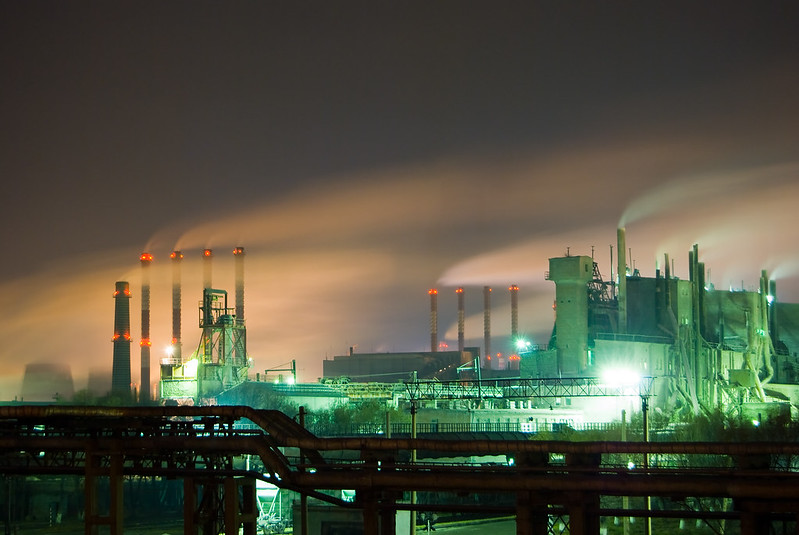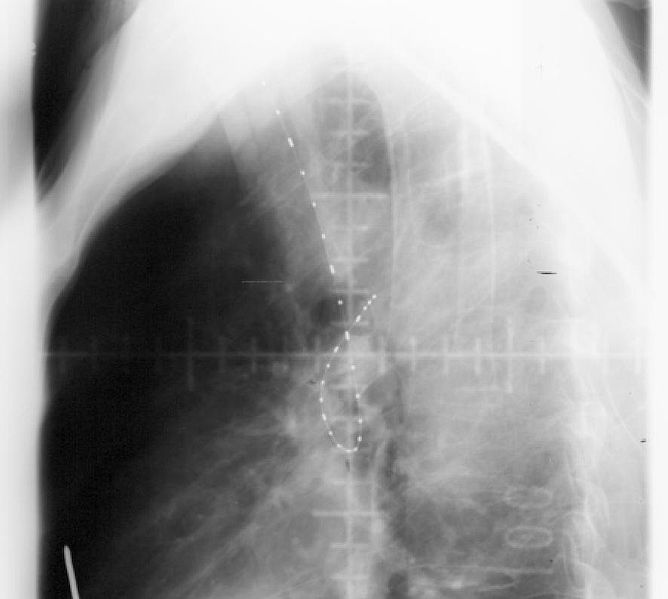
Radiation Levels: No Cause for Alarm in Tokyo
Radiation is found in our natural environment; this is known as “background radiation” or “ionizing radiation.” It can be in the form of cosmic and solar radiation, radiation from the earth’s crust, radon, and the like. Other sources of radiation can be man-made —emitssions from televisions, x-rays, and some other medical diagnostic equipment.
The radiation we are exposed to every day in our surroundings ise called “radionuclide.” We can absorb it in internal and external doses. Internal doses can come from the food and drink that we consume. We can also breathe in radiation. External doses are radiation we absorb from our environment—rocks and soil, for instance. All of this type of radiation can be blocked by any type of barrier.
X-ray of person’s body undergoing endobronchial radiation therapy. | wikimedia/Tdvorak
Radiating energy is known as radiation, while radioactivity is a specific type of radiation: the production of electromagnetic particles during nuclear decay. When we get an x-ray or a CT Scan, our body is exposed to radioactivity.
We are often concerned about radiation’s harmful effects to our health. For example, we mayt worry about our prolonged exposure to the sun. Skin protects the body from the intensity of the sun’s heat, and in doing so, our skin cells and epidermis can be damaged by UV radiation. It may even lead to skin cancer.
How Radiation is Measured
The absorbed dose of radiation is measured in “sievert (Sv)” based on the International System of Units. Since a sievert is such a huge quantity, we usually break it down into millisieverts (one-thousandth of a sievert), or microsieverts (a millionth of a sievert). The average dose of radiation in a year for a human being is 2.4 mSv. However, this can range, depending on the person’s geographical location, from 1 to 10 mSv.
More information about radiation measurement is in this article from The Star.
Radioactivity at Fukushima Nuclear Power Plant
Fukushima Daiichi Nuclear Power Plant at night.
The latest increase radioactivity levels in the environment comes from the damage to the Fukushima Daiichi Nuclear Power Plant in Japan. It was severely affected when it was hit by a tsunami in March of this year, causing radiation to leak out and spread. This has raised concerns on just how much radiation a human body can absorb before it becomes harmful.
In Tokyo, 150 miles from Fukushima, the radiation levels that residents were exposed to during the height of the incident are not cause for alarm. The level was 0.809 microsieverts per hour, which is much, much lower than radiation doses from certain standard medical equipment. Many Japanese undergo CT scans that produce radiation levels of approximately 10 millisieverts, which is equivalent to 10,000 microsieverts. This quantity is a lot more than what they can absorb from the Fukushima fallout.
In a statement released by the British government’s Chief Scientific Adviser, Sir John Beddington, the real risk is with the people living in the immediate vicinity of the Fukushima Nuclear Power Plant, as well as those working inside the plant. The Japanese government has continued to advise Fukushima residents to stay indoors, as the walls and barriers of their home are enough to reduce exposure. However, it is no longer a health issue 20-30 km from the source.
The Japanese government has also taken all necessary precautions to make sure all food and drinks being sold are safe for consumption. It has continued to assure the people that Tokyo is out of way, out of the danger zone. The real concern for excessive amounts of radiation is not from the Fukushima Nuclear Power Plant but rather from prolonged exposure to other sources.
To learn more about radiation in everyday life, check out the FAQ page of the International Atomic Energy Agency.


